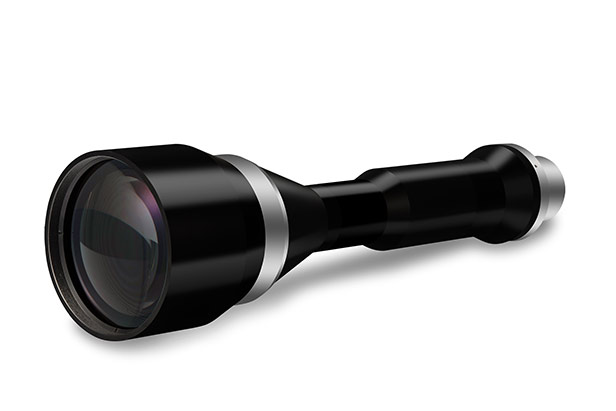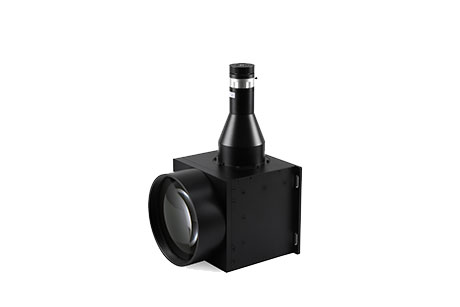Vision inspection systems, also known as machine vision systems, are automated technologies designed to visually inspect and assess objects for defects, irregularities, or specific characteristics. These systems use a combination of hardware and software components to mimic human vision and judgment. Vision inspection systems play a crucial role in modern industries, offering automated and precise visual inspection capabilities. The importance and widespread adoption of vision inspection systems lie in their ability to enhance quality, efficiency, and reliability across various industries, ultimately contributing to the success and competitiveness of manufacturing processes.
A Vision Inspection System, also known as a machine vision system, is a technology designed for automated visual inspection and analysis of objects. It combines hardware components, such as cameras and lighting, with software algorithms to replicate and enhance human visual perception. The primary goal of a machine vision inspection systems is to assess the quality, integrity, and characteristics of objects in a fast and accurate manner.
Machine Vision Systems consist of various components that work together to capture, process, and analyze visual information for automated inspection and decision-making.
Cameras:
Cameras are fundamental components that capture images or videos of the objects being inspected. Different types of cameras, such as charge-coupled device (CCD) or complementary metal-oxide-semiconductor (CMOS) cameras, may be used based on the application requirements.
Lighting: Proper illumination is critical for creating optimal imaging conditions. Different lighting techniques are employed based on the specific requirements of the inspection task. Common lighting methods include:
Back Lighting: Illumination from behind the object helps create a silhouette, making it easier to detect surface features and defects.
Diffuse Lighting: Scatters light evenly across the object's surface, reducing shadows and providing uniform illumination for detailed inspection.
Ring Lighting: Consists of a circular arrangement of lights around the camera lens, providing even and shadow-free illumination for object features.
The machine vision lenses: Lenses play a crucial role in focusing light onto the camera sensor and determining the field of view. The choice of lens depends on factors such as working distance, field of view, and desired image resolution. Common types include fixed focal length lenses and zoom lenses.
Image Processing Software: Image processing software is responsible for analyzing the captured images. It includes algorithms for tasks such as edge detection, pattern recognition, color analysis, and image enhancement. This software is integral to the decision-making process of the machine vision system.
Frame Grabbers: Frame grabbers capture and convert analog signals from the camera into digital images that can be processed by the machine vision software. They facilitate communication between the camera and the processing unit.
Processing Unit: The processing unit, often a computer or dedicated hardware, executes the image processing algorithms and decision-making logic. It may include a central processing unit (CPU), graphics processing unit (GPU), or specialized processors for efficient image analysis.
Communication Interfaces: Machine vision systems often need to communicate with other components in a larger automation system. Common communication interfaces include Ethernet, USB, or industrial protocols such as GigE Vision or Camera Link.
Feedback Mechanism:In industrial settings, machine vision systems are integrated into production lines, and their decisions often trigger actions in real-time. A feedback mechanism ensures that the inspection results can be used to control processes, such as sorting or rejecting defective items.
User Interface:A user interface allows operators to configure, monitor, and troubleshoot the machine vision system. It provides a means for adjusting settings, reviewing inspection results, and making necessary adjustments.
Machine Vision Systems encompass a range of functions that enable automated inspection and analysis of visual information. Here's an introduction to some key functions and the corresponding work tasks they can perform:
Object Recognition: Sorting and classifying items on a production line based on their shapes, sizes, or other distinguishing features.
Defect Detection: Identifying and flagging defects or abnormalities in manufactured products, such as scratches, dents, or missing components.
Measurement and Dimensional Analysis: Accurately measuring the dimensions of objects, ensuring they meet specified tolerances in manufacturing processes.
Circuitry Assessment: Inspecting electronic circuit boards for soldering defects, misplaced components, or other issues that may impact functionality.
Pattern Recognition: Identifying and interpreting complex patterns, useful in applications such as recognizing product labels, barcodes, or specific markings.
Robot Guidance: Guiding robots by providing visual information for precise manipulation and positioning of objects in applications such as robotic assembly and material handling.
Machine Vision Systems are versatile and find applications across various industries, including manufacturing, automotive, electronics, pharmaceuticals, and logistics. They contribute to automation by performing tasks that traditionally required human visual inspection, leading to increased efficiency, improved quality control, and reduced production costs. These systems enhance productivity and reliability while ensuring that products meet stringent quality standards.

Machine Vision Systems work by utilizing advanced technologies to capture, process, and analyze visual information for automated decision-making. The following steps provide an overview of how these systems typically operate:
Image Acquisition: The process begins with capturing images or videos of the objects to be inspected. High-resolution cameras, which may be equipped with lenses for specific applications, capture detailed visual information.
Illumination: Proper lighting is crucial for creating optimal imaging conditions. Various lighting techniques, such as back lighting, diffuse lighting, or ring lighting, are used to highlight specific features and enhance contrast.
Image Preprocessing: Raw images may undergo preprocessing to improve their quality. This can involve tasks such as adjusting brightness and contrast, removing noise, and correcting distortion, ensuring that the images are suitable for analysis.
Image Analysis:The heart of a Machine Vision System lies in its ability to analyze images. Advanced algorithms and image processing techniques are applied to extract relevant information from the captured visuals. This analysis includes the evaluation of color, shape, texture, and other features.
Pattern Recognition: Machine vision systems often employ pattern recognition algorithms to identify specific patterns or characteristics associated with the desired or undesired conditions. This step enables the system to distinguish between acceptable and defective items.
Machine Vision Systems use a combination of hardware (cameras, lighting, lenses) and software (algorithms, image processing) components to automate visual inspection tasks. These systems are versatile, finding applications in industries such as manufacturing, quality control, robotics, and logistics, contributing to increased efficiency, accuracy, and reliability in various processes.
Machine Vision Systems are used across various industries for automated inspection, quality control, and process optimization.
Semiconductor Quality Control:
Defect Detection: Machine vision is used to inspect semiconductor wafers and identify defects such as scratches, particles, or pattern variations.
Wafer Inspection: Automated systems examine the surface of semiconductor wafers for imperfections and ensure they meet quality standards.
Automotive Industry:
Assembly Line Inspection: Machine vision is employed for inspecting components during the assembly process to ensure proper placement and alignment.
Quality Assurance: Vision systems check for defects in automotive parts such as paint finish, welds, and overall product quality.
Robot Guidance: Vision-guided robots are used for tasks like picking and placing components, improving automation in manufacturing.
Pharmaceuticals:
Quality Control in Drug Manufacturing: Machine vision ensures that pharmaceutical products are manufactured with precision, detecting any anomalies in size, color, or shape.
Labeling and Packaging Inspection: Vision systems verify the accuracy of labels and packaging, ensuring compliance with regulations.
Food and Beverage Industry:
Quality Inspection: Machine vision is used to inspect food products for defects, ensuring that only high-quality items reach the market.
Packaging Verification: Vision systems check the accuracy of packaging, including label placement and seal integrity.
Electronics Manufacturing:
Printed Circuit Board (PCB) Inspection: Machine vision systems inspect PCBs for defects in soldering, component placement, and traces.
Component Verification: Vision systems verify the correct placement and orientation of electronic components on circuit boards.
Medical Imaging:
Diagnostic Imaging: Machine vision aids in medical diagnostics by analyzing and interpreting images from medical scans such as X-rays, MRIs, and CT scans.
Biomedical Research: Vision systems assist in laboratory research, analyzing cellular and molecular structures.

The use of Machine Vision Systems (MVS) offers several benefits across different industries, contributing to increased efficiency, improved quality control, and enhanced productivity. The adoption of machine vision systems brings about numerous advantages, making them a valuable asset across diverse industries.
Automation and Efficiency: MVS automates visual inspection processes, reducing the need for manual labor and increasing overall efficiency. High-speed image processing allows for rapid inspection and analysis, improving production line speed and throughput.
High Precision and Accuracy: Machine vision systems provide a high level of accuracy in detecting and identifying defects or inconsistencies in products or processes. Precise measurements and inspections contribute to the production of high-quality goods with minimal variations.
Consistent Quality Control: MVS ensures consistent quality across production batches, minimizing the risk of human error in inspection tasks. Continuous monitoring helps maintain a high level of product quality and compliance with industry standards.
Increased Productivity: By automating inspection tasks, machine vision systems enable faster and more efficient production processes. Rapid identification and correction of defects reduce downtime and improve overall productivity.
Cost Savings: Automation through machine vision can lead to cost savings by reducing the need for manual inspection and rework. Early detection of defects helps prevent the production of faulty products, saving resources and minimizing waste.
Enhanced Flexibility: Machine vision systems can be easily adapted for different inspection tasks, making them versatile and suitable for various industries. The flexibility of these systems allows manufacturers to adjust to changing production requirements.
Related Machine Vision Telecentric Lens Products
Related Machine Vision Telecentric Lens Articles
 English
English  日本語
日本語  한국어
한국어  français
français  Deutsch
Deutsch  Español
Español  italiano
italiano  русский
русский  português
português  العربية
العربية  ไทย
ไทย 